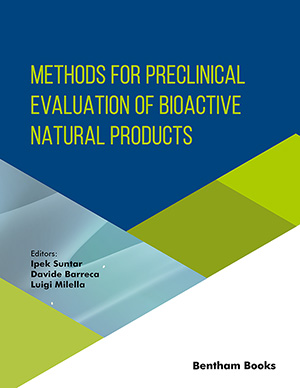Abstract
Background: Peptic ulcer disease (PUD) is prevalent in almost all parts of the world. PUD complications are a major source of health care expenses; however, they are preventable. The major factors responsible for the incidence of PUD and its complication have changed over the past few decades after the identification of non-steroidal inflammatory drugs (NSAIDs) and Helicobacter pylori bacterial infection along with a marked increase in the use of proton-pump inhibitors (PPIs) as drug therapy. The management of PUD has become more complex and challenging due to antimicrobial resistance.
Objectives: The objective of the study was to highlight current therapy and novel techniques used in the treatment of peptic ulcer diseases.
Methods: An exhaustive literature search has been conducted across PubMed, Google, Scopus and Web of Science electronic databases to extract the crucial information from the relevant literature.
Results: In the present review, we have discussed PUD and its pathophysiology. The recent trends in PUD and possible treatments with novel techniques have also been discussed. The type and presence of ulcers cannot be predicted accurately based on symptoms. The available treatment approaches for peptic ulcers based on their clinical presentation and etiology are anti-secretory therapy, endoscopy to reveal ulcers, followed by drug therapy, and triple therapy for H. pylori infection.
Conclusion: Thus, the popular and effective methods are very beneficial in controlling PUD. The treatment based on diagnosis is the foremost requirement for ameliorating any disorder. In this article, the emerging techniques and advancements in the treatment and diagnosis of PUD have been reviewed.
Keywords: Peptic ulcer, proton pump inhibitor, perforation, acidity, dyspepsia, NSAIDs, H. pylori.
[http://dx.doi.org/10.1016/j.biomaterials.2020.119940] [PMID: 32200103]
[http://dx.doi.org/10.1080/13102818.2018.1481350]
[http://dx.doi.org/10.1111/imr.12567] [PMID: 28856738]
[http://dx.doi.org/10.2147/CEG.S173130] [PMID: 31239747]
[http://dx.doi.org/10.1016/j.jaci.2019.11.012] [PMID: 31758958]
[http://dx.doi.org/10.1016/j.mpaic.2020.12.007]
[http://dx.doi.org/10.7759/cureus.13156] [PMID: 33692925]
[http://dx.doi.org/10.4103/2141-9248.126604] [PMID: 24669326]
[PMID: 31905355]
[http://dx.doi.org/10.1016/j.sajb.2020.11.030]
[http://dx.doi.org/10.3390/molecules25225431] [PMID: 33233494]
[http://dx.doi.org/10.1016/j.procbio.2019.06.024]
[http://dx.doi.org/10.18773/austprescr.2017.037] [PMID: 28798512]
[http://dx.doi.org/10.2147/DHPS.S71976] [PMID: 25653559]
[http://dx.doi.org/10.18203/2394-6040.ijcmph20183869]
[http://dx.doi.org/10.1590/S0004-28032014000200016] [PMID: 25003270]
[PMID: 10225026]
[http://dx.doi.org/10.1007/978-3-319-90761-1_63-1]
[http://dx.doi.org/10.1136/gut.49.3.443] [PMID: 11511570]
[http://dx.doi.org/10.1186/1749-7922-9-45] [PMID: 25114715]
[http://dx.doi.org/10.3390/jcm8020179] [PMID: 30717467]
[http://dx.doi.org/10.1186/s12916-016-0718-z] [PMID: 27825371]
[http://dx.doi.org/10.1007/s00068-020-01597-6] [PMID: 33590271]
[http://dx.doi.org/10.9738/INTSURG-D-15-00180.1]
[http://dx.doi.org/10.1016/S0140-6736(15)00276-7] [PMID: 26460663]
[http://dx.doi.org/10.3748/wjg.v26.i35.5302] [PMID: 32994689]
[http://dx.doi.org/10.1159/000264653] [PMID: 20571260]
[http://dx.doi.org/10.1097/MD.0000000000010665] [PMID: 29718891]
[http://dx.doi.org/10.5402/2013/714970]
[http://dx.doi.org/10.1007/5584_2019_367] [PMID: 31016626]
[http://dx.doi.org/10.1053/j.gastro.2018.07.007] [PMID: 29990487]
[http://dx.doi.org/10.1186/s12879-019-4085-1] [PMID: 31113384]
[http://dx.doi.org/10.1111/hel.12777] [PMID: 33368895]
[http://dx.doi.org/10.2217/nnm-2019-0329] [PMID: 32028847]
[http://dx.doi.org/10.1016/j.amjmed.2018.12.009] [PMID: 30611829]
[http://dx.doi.org/10.2174/1381612824666180510092303] [PMID: 29745325]
[http://dx.doi.org/10.1016/j.aoas.2020.05.001]
[http://dx.doi.org/10.1155/2017/8379262] [PMID: 28408943]
[http://dx.doi.org/10.1590/S0102-67202014000400017] [PMID: 25626944]
[http://dx.doi.org/10.1038/s41598-019-48173-6] [PMID: 31406189]
[http://dx.doi.org/10.3892/ol.2020.11817] [PMID: 32782574]
[http://dx.doi.org/10.1007/s00535-019-01657-8] [PMID: 31865463]
[http://dx.doi.org/10.3390/cells9010180] [PMID: 31936877]
[http://dx.doi.org/10.1016/j.ejps.2019.04.013] [PMID: 30991092]
[http://dx.doi.org/10.3390/molecules20059099] [PMID: 25996214]
[http://dx.doi.org/10.3390/ijms20184367] [PMID: 31491986]
[http://dx.doi.org/10.5492/wjccm.v4.i1.40] [PMID: 25685721]
[http://dx.doi.org/10.1186/1471-2318-13-36] [PMID: 23602075]
[http://dx.doi.org/10.1111/apt.13298] [PMID: 26096497]
[http://dx.doi.org/10.1097/MD.0000000000000377] [PMID: 25569664]
[http://dx.doi.org/10.3748/wjg.v23.i11.1954] [PMID: 28373761]
[http://dx.doi.org/10.1200/JCO.2000.18.3.463] [PMID: 10653861]
[http://dx.doi.org/10.1148/radiol.10092129] [PMID: 21183492]
[http://dx.doi.org/10.1186/s40560-020-0427-8] [PMID: 31988751]
[http://dx.doi.org/10.1186/cc13780] [PMID: 25029573]
[http://dx.doi.org/10.13105/wjma.v7.i3.72]
[http://dx.doi.org/10.1159/000365310] [PMID: 26672968]
[http://dx.doi.org/10.1242/dmm.027649] [PMID: 28151409]
[PMID: 31612272]
[http://dx.doi.org/10.1080/00365521.2019.1647456] [PMID: 31353983]
[http://dx.doi.org/10.4240/wjgs.v6.i1.5]
[http://dx.doi.org/10.4240/wjgs.v9.i1.1] [PMID: 28138363]
[http://dx.doi.org/10.1177/2397847317741884]
[http://dx.doi.org/10.3748/wjg.v25.i34.5097] [PMID: 31558859]
[http://dx.doi.org/10.1055/a-1186-5360] [PMID: 32459000]
[http://dx.doi.org/10.3892/etm.2016.3293]
[http://dx.doi.org/10.1007/s00253-017-8535-7] [PMID: 29075827]
[http://dx.doi.org/10.1186/s40795-018-0257-4] [PMID: 32153909]
[http://dx.doi.org/10.1080/22311866.2019.1710253]
[http://dx.doi.org/10.1016/j.bcab.2018.09.023]
[http://dx.doi.org/10.1016/j.bcab.2019.101033]
[http://dx.doi.org/10.1186/s40816-017-0044-9]
[http://dx.doi.org/10.1155/2016/1062430] [PMID: 26942038]
[http://dx.doi.org/10.1016/j.jep.2014.06.050] [PMID: 25010927]
[http://dx.doi.org/10.1016/j.vetpar.2021.109490] [PMID: 34271319]
[http://dx.doi.org/10.1016/j.vetpar.2021.109508] [PMID: 34218174]
[http://dx.doi.org/10.11158/saa.26.7.13]
[http://dx.doi.org/10.1016/j.exppara.2020.108017] [PMID: 33039477]
[http://dx.doi.org/10.1016/j.bcab.2020.101611]
[http://dx.doi.org/10.1080/01647954.2020.1765018]
[http://dx.doi.org/10.1080/01647954.2020.1767203]
[http://dx.doi.org/10.3831/KPI.2016.19.027] [PMID: 27695635]
[PMID: 25920371]
[http://dx.doi.org/10.1055/a-0898-3357]
[http://dx.doi.org/10.1111/j.1751-2980.2008.00325.x] [PMID: 18419639]
[http://dx.doi.org/10.1016/j.gie.2017.05.018]
[http://dx.doi.org/10.3748/wjg.v17.i36.4109]
[http://dx.doi.org/10.18528/gii180025]
[http://dx.doi.org/10.1016/j.dld.2014.05.008] [PMID: 25022337]






























